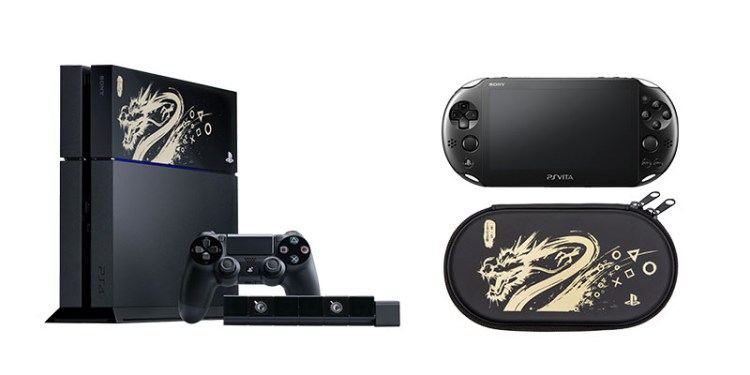As it stands now, Sony leads the next-generation console race with its PlayStation 4, with worldwide lifetime sales of 18.5 million consoles after only 14 months. The Japanese publisher is making its stand for the newest generation of consoles in a market that is expected to make $88 billion in revenues in 2015. Despite two great holiday months and a nice discount, Microsoft’s Xbox One trails, with estimates coming in at 11 million systems sold. But Microsoft was first out of the gate to jump on a huge opportunity to gain market share: China.
This time last year, China opened its market to foreign-made gaming consoles, effectively ending a 14-year ban. Under China’s new trade initiatives, sales may take place in the Shanghai Free-Trade Zone, a new test bed for economic growth. The door is now open for the first time for Sony, Microsoft, and Nintendo to get in on the fastest-growing gaming market in the world.
Microsoft wasted no time in making the first move. The company announced plans to release its Xbox One console in China just months after the ban dissolved. After minor delays, the Xbox One hit shelves at select Chinese retailers for 4,299 yuan (just under $700), paired with a launch lineup of 10 games. While Microsoft has yet to release official numbers, experts say that the launch moved about 100,00 units.
Sony followed soon after, announcing intent to enter the Chinese market with its latest, the PlayStation 4. The console was originally slated for a Jan. 11 release, but much like the Xbox One launch, it is held up due to “various factors.” Sony has yet to determine a new date of sale.
When Sony finally does launch the PlayStation 4 in China, it will sell for 2,899 yuan ($467), coming out at about $129 less than Xbox One base model, and the equivalent of $226 less than the Xbox One Kinect bundle.
Even if Sony were to enter the territory without competition, it would still face a rough road. The Japanese company is entering mostly uncharted territory by bringing the PlayStation 4 to China — one where the degrees of government interference and market challenges are unlike any it has entered before.
The gray market
In the decade-and-a-half that the communist government banned game consoles from China, gamers there learned to make do with what they had, namely computers and later mobile devices. The $18.5 billion dollar Chinese game market is more than a half a billion gamers strong, second only to North America in terms of revenue, and it consists of players that are conditioned to booting up the newest massively multiplayer online (MMO) or free-to-play action game on their PCs and phones.
But even with the grip PC and mobile have on the market, China does have console gamers. With a countrywide ban in place, figuring out the size of this player base is difficult, if not impossible. But we do have some hints.
The existing consoles come from the gray market, often supplied by neighbors like Hong Kong and Taiwan, where despite differing and constantly changing laws and regulations, all major players in the console market have been selling their wares for decades. Close proximity to mainland China provides for a steady, reliable source for supplying gray market storefronts.
Chinese gamers might point out that the opening of the market to consoles isn’t really that much of a change. Despite being technically illegal, the Xbox 360, PS3, and others and their games from outside territories have been readily available in mainland China for years, as the ban laws were not heavily enforced. People can easily purchase banned consoles online in China right now, though they’re priced much higher than they are in the West.
The release of China’s own consoles aren’t likely to push out illegal imports, either. We may find that with more games available on gray market systems, Chinese gamers have less incentive to purchase a legal console. And that’s not taking piracy into consideration.
Gray market systems in China are often sold modified so that these can play pirated games. Some include hard drives preloaded with a menu of popular titles to entice buyers. But consoles aren’t necessarily needed to enjoy the latest hits, as a combination of piracy-friendly modified PCs and unofficial localizations of games available in other regions exist and thrive. This combination seems to be serving the Chinese console player base well already.
Even without official means to measure the market, game-business research firm Newzoo feels that China already has a big console player base. This would normally be great news for Sony and other system makers, but the problem is that this market is not controlled by the original manufacturers and intellectual property owners.
Take the popular sandbox game Grand Theft Auto V, for example. While it’s banned in China, websites exist that enable gamers to download hacked, localized versions for play on modified consoles. Newzoo’s Peter Warman points GamesBeat to one example, www.ali213.net, where Grand Theft Auto V saw over 10 million downloads. Compare that to the game’s sales numbers of 33 million copies worldwide. This means that at least tens of millions of Chinese gamers are playing console games for free right now. The benefit is that they know the brand names, and they like them. This is one of the unspoken benefits of years of piracy. The burden is on Sony and others to turn them into paying customers.


